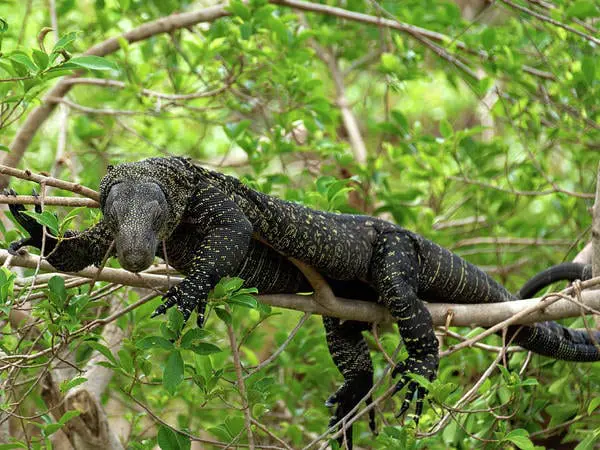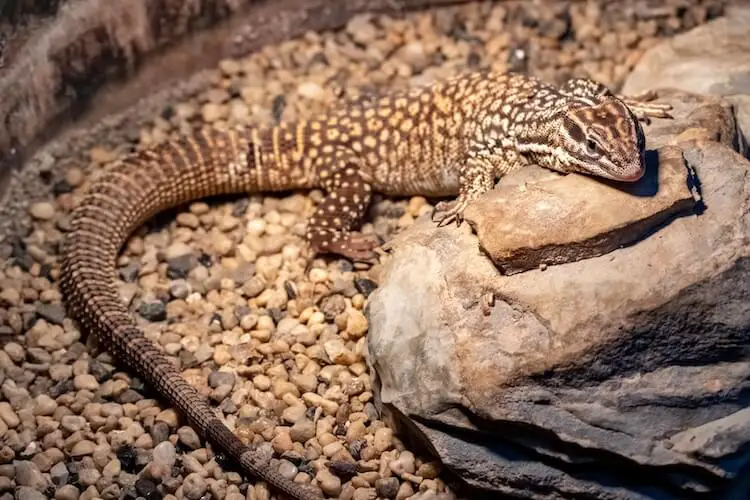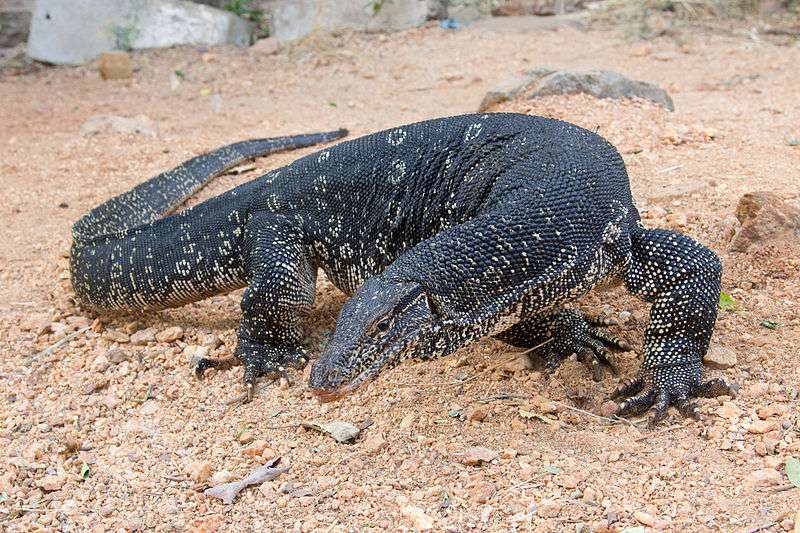
Description
Scientific name: Varanus salvadorii
Life span: Up to 10- 15 years in captivity
The crocodile monitor is one of the longest monitor lizards that grows up to 8 feet in length. The tail is 2/3rd of the total length of the body. In captivity, after hatching the growth rate is 2 inches per month. They have a body that is dark green and covered with bars of yellow dots. It has a long tail and a distinctive blunt nose. Compared to other monitors, its teeth are more geared to capturing prey that is moving quickly. They have structural characteristics that make it possible for them to breathe more freely when sprinting than other lizards can. However, it’s possible that they have even more energy than other species of monitors.
Native Region/Habitat
Crocodile monitors are native to the island of New Guinea. They are found in coastal rainforests, mangrove swamps, and heavy rainforests.

Behavior
The crocodile monitor is a solitary and diurnal species of lizard. It can cling to tree branches with its back legs and sometimes use its tail to twist around branches. They are very arboreal and swift. They prefer to rest on tree branches. They have a distinctive hunting strategy. They could pursue their prey and predict where it will flee, confronting it head-on, rather than following it to trap it from behind. They will stand upright on their rear legs when they need to survey. They also make a warning call when feeling some danger in their surroundings. They are known to mate with several partners. Females typically deposit 4-12 eggs in a clutch from October-January. Their hatchlings are 56 g in weight and 46 cm in length. Juvenile monitors are more colorful than adults and predominantly eat insects and tiny reptiles.
Care As a pet/In captivity
Crocodile monitor lizards are arboreal in nature. However, they also like to swim and sleep underwater. They also love to stay in the holes in the ground. Hatchlings may be kept in a 40-gallon enclosure. When these monitors get bigger, they’ll need a bigger enclosure considering the large space for their movement. About 75-gallon enclosure will be needed when the crocodile monitor will become 1-2 years of age. They need room to move around, climb, and roll out. Make sure all cages are solid and impossible to escape from. Adult monitors required locked doors in the enclosure to avoid escape.
Table





